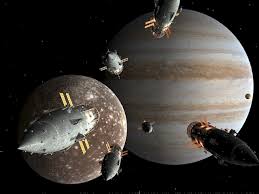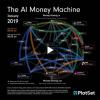
Breaking News
We Americans Need to Dig Deep into Historical Perspective
 A timeless clip of Michael Burry explaining how he used credit default swaps...
A timeless clip of Michael Burry explaining how he used credit default swaps...
 The next financial crisis won't start in a bank lobby. It's already brewing in the market
The next financial crisis won't start in a bank lobby. It's already brewing in the market
Top Tech News
 This tiny dev board is packed with features for ambitious makers
This tiny dev board is packed with features for ambitious makers
 Scientists Discover Gel to Regrow Tooth Enamel
Scientists Discover Gel to Regrow Tooth Enamel
 Vitamin C and Dandelion Root Killing Cancer Cells -- as Former CDC Director Calls for COVID-19...
Vitamin C and Dandelion Root Killing Cancer Cells -- as Former CDC Director Calls for COVID-19...
 Galactic Brain: US firm plans space-based data centers, power grid to challenge China
Galactic Brain: US firm plans space-based data centers, power grid to challenge China
 A microbial cleanup for glyphosate just earned a patent. Here's why that matters
A microbial cleanup for glyphosate just earned a patent. Here's why that matters
 Japan Breaks Internet Speed Record with 5 Million Times Faster Data Transfer
Japan Breaks Internet Speed Record with 5 Million Times Faster Data Transfer
 Advanced Propulsion Resources Part 1 of 2
Advanced Propulsion Resources Part 1 of 2
 PulsarFusion a forward-thinking UK aerospace company, is pushing the boundaries of space travel...
PulsarFusion a forward-thinking UK aerospace company, is pushing the boundaries of space travel...
 Dinky little laser box throws big-screen entertainment from inches away
Dinky little laser box throws big-screen entertainment from inches away
 'World's first' sodium-ion flashlight shines bright even at -40 ºF
'World's first' sodium-ion flashlight shines bright even at -40 ºF
What Exponential Space Capabilities Can Look Like

Aviation also experienced decades of exponential growth and Space has had ten years of exponential growth and is looking at 40 years of exponential growth.
There were 6,000 airline passengers in the United States recorded in 1926. This grew to approximately 173,000 in 1929 about one million in 1936. Air passenger traffic grew faster in the United States than anywhere else in the world, largely due to superior aircraft and operations methods.
Aviation Went Exponential for Fifty Years and So Can Space Transportation
SpaceX is making reusable rockets that are lower cost than passenger airplanes. Passenger airplanes cost about $50 million to $350 million. SpaceX is building the Falcon 9 for about $40 million and the Falcon Heavy for about $80 million. The fully reusable Super Heavy Starship will start at about $200 million and then drop to about $30 million. The upper stage Starship will drop to about $5 million when about 300 are produced every year. Airbus and Boeing were each able to deliver about 1000 passenger jets each year.

 The AI money machine!
The AI money machine!

